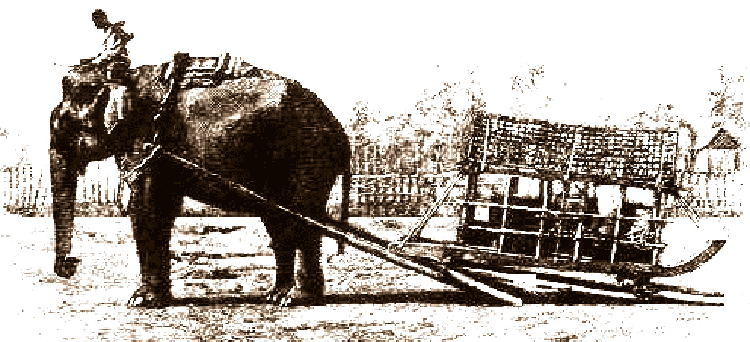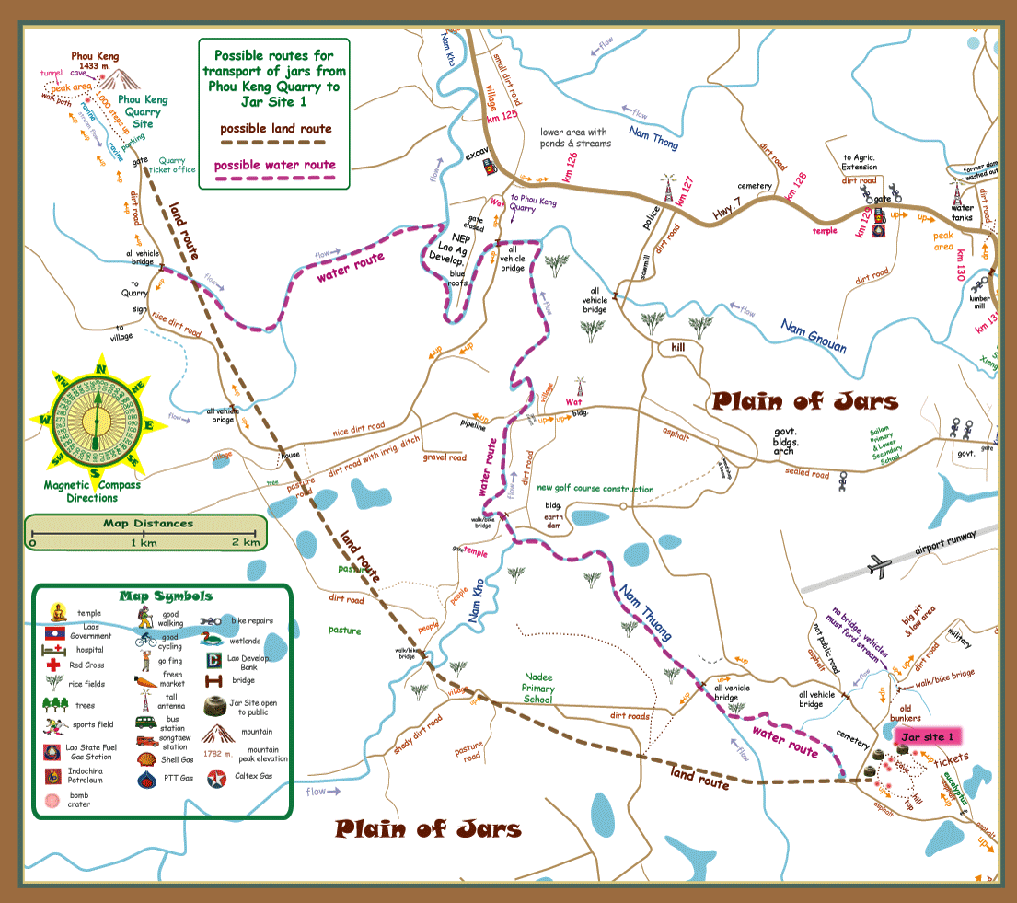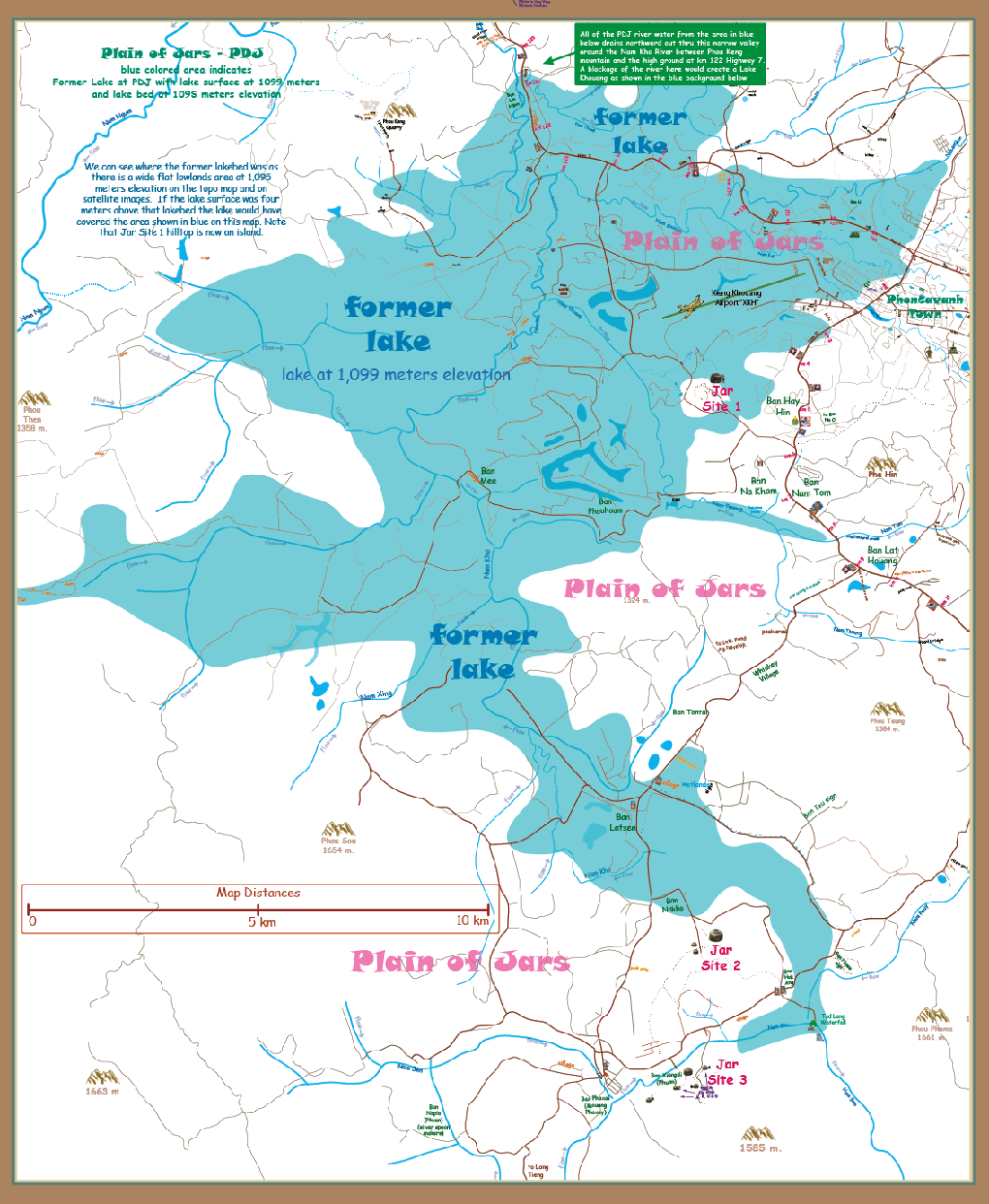
Transport of Jars at Plain of Jars, Laos - PDJ Jar Transport - HoboMaps.com - Go to Plain of Jars Info Page - - - - Home
Jar Size and Weight
It is generally agreed that all jars at the Plain of Jars (PDJ) have been carved out of solid rock and are very heavy. Click HERE to see pictures of the largest jars we found at each site along with measurements and calculations of estimated weights.
The biggest jar is the King Jar (Hai Jeuam) at Jar Site 1 which has an estimated finished weight of 9,600 kilograms. But most of the jars at Sites 1, 2 & 3 weigh less than 2,000 kilograms each. Since some of the largest jars may have been carved from naturally-situated boulders lying about where ancient people found them we can't be sure that all of the jars were transported.
The only quarry identified as a source of jars at Sites 1, 2 & 3 is the Phou Keng Quarry site which is believed to be a source for some of the jars at Jar Site 1. But calling places where jars were transported from as "quarries" may be misleading since some of these sources are actually just boulder fields with naturally-situated boulders lying about on the surface as is the case with the Phou Keng "Quarry".

Elephant Sled Transport
From the jars observed at Jar Sites 1, 2, 3 & 16 it seems that at least 90% are of a size less than 2,000 kilograms and could have been transported downhill or on a level surface by an elephant pulling a sled similar to the one in the illustration above. It seems likely a team of oxen, bullocks or buffalo could have been used in place of an elephant.
An official from the Xieng Khuang provincial Tourism Office office commented in an article in the Vientiane Times on August 19, 2010 about the Phou Keng Quarry - “We agree with the elderly men and women living in the area who told us that the craftsmen who made the stone jars used large animals and elephants to carry them to the Plain of Jars. We found many stone jars finished and ready for transportation and many still in the process of being made.”
Phou Keng Quarry
When viewing the unfinished jars at the Phou Keng Quarry site we see that jar-finishing work was being conducted at this site. It seems likely that only finished jars were transported and that unfinished blocks or boulders were not transported due to their greater weight.
The map below shows possible land and water transport routes from Phou Keng Quarry site to Jar Site 1 about 10 kilometers away. The quarry is at a higher elevation than Jar Site 1 and the land route would be mostly over flat terrain without any natural obstructions to overcome other than crossing two rivers and two streams.

Water Channel Transport
For transport of jars from a quarry to a jar site located a few kilometers away it may have been helpful to use some form of water transport. A quarry located near a river or water channel might allow use of a raft or boat for transport by sliding or rolling a jar down onto a watercraft. Such transport might have included irrigation channels for rice fields or maybe even special water channels created solely for the purpose of moving jars to a jar site.
Former Lake Transport
There may have been a former lake existing at the PDJ long ago as the area is ringed by higher mountains and is rather flat with topsoil that seems sedimentary. Click HERE to see what areas may have been covered by a former lake.
After a jar had been carved at the quarry or boulder field it could have been slid downhill to the lake and onto a raft to carry the jar to a new site also near the shoreline. The distance a raft could easily travel on the lake would be unlimited and would open up the entire lakeshore and all islands in the lake for use as easily-accessible jar sites.
Water transport could have been done each year when the lake level was at its highest to minimize the distance from the quarry to the lakeshore and also to shorten the distance of uphill land transport to the jar site.
At the higher surface water level of 4 meters above the lake bed Jar Site 1 would be entirely on an island and jars on rafts could be transpoted to within a few meters of Jar Site 1 lower area.
